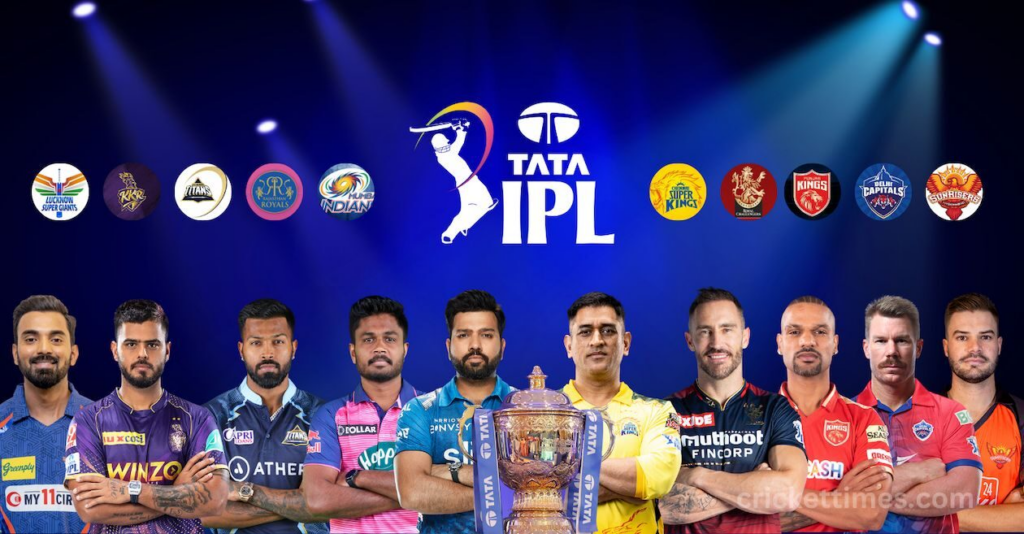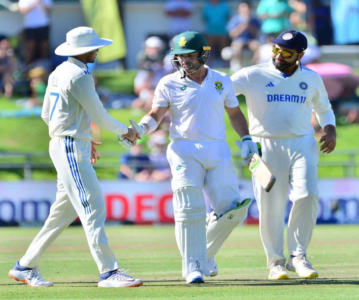
I pose a question: What is the difference between sustainability and greed? I decided to engage with ChatGPT and see what the response was. The below is an extract of the response:
“The concept of sustainability refers to the ability to maintain a balance between the consumption of natural resources and the preservation of the environment for future generations. It is about meeting the needs of the present without compromising the ability of future generations to meet their own needs. Greed, on the other hand, is an excessive and selfish desire for wealth, power, or material possessions. It is characterized by the pursuit of self-interest at the expense of others and the environment.”
England introduced the T20 format in 2003 in response to dwindling crowds and reduced sponsorship. The idea was to create a fast-paced game that would attract younger crowds and more viewers on television. The format took off with India capitalizing immensely with the formation of the Indian Premier League (IPL).

The owners of the IPL have since got their grubby paws in South Africa’s SA20 competition while the owners of the Rajasthan Royals in the IPL also own the Barbados Tridents in the Caribbean Premier League, which has since been renamed the Barbados Royals.
The IPL’s success and popularity has seen players forgo playing for their country in order to earn mega-bucks at the IPL. The SA20, with the second edition having begun on 10 January 2024, is deemed to be the financial savior for Cricket South Africa (CSA).
Esteemed cricket journalist, Telford Vice, disagrees with my viewpoint, stating “We need to get away from the idea that international cricket is sacrosanct. Professional cricket is a product to be sold, bought and consumed, and franchise T20 leagues are a better product than much of what passes for the international game.“
The mismanagement that befell CSA over the previous years saw the withdrawal of sponsorships for the local tournaments as well as dwindling crowds. The need for financial security with any cricketing nation is a must, but, does this need come at the expense of Test cricket?
“Sentiment, nationalism and tradition have no place in this conversation. It really is that simple,” Vice stated.
Many will yes, while those, like myself, see Test cricket as the pinnacle of the game. The ultimate test of concentration and stamina. The ability to put a plan into action, play with consistency and execute that plan is beautiful to watch over five days of cricket. Many see the advent of T20 cricket as a curse to the longer format while others propose that T20 cricket has elevated the excitement of Test cricket.
“It’s time international cricket was squeezed into smaller windows to make more room for franchise leagues,” Vice said.
There are not many Test matches that last the full five days anymore, considering that the recently concluded – so called – two-match Test series between South Africa and India concluded in just four and a half days – over both tests!
The first Test lasted three days while the second Test was done and dusted in one and a half days, although the Newlands ground staff were criticized for the nature of the wicket. One cannot blame a bunch of part-timers to prepare a suitable test wicket, as the Western Province Cricket Association cannot afford a full time groundsman.
However, this is not to belittle T20 cricket in any way (although it is not my favourite format), but rather to pose the question as to why South Africa play so few Tests compared to England, Australia and India.
In the current Future Tours Program (FTP), which runs from 2023 to 2027, South Africa play just 30 Test matches with India playing 45, Australia 51 and England 55!
That is almost twice as many tests as South Africa. The scariest stat is that England, Australia and India all play four 5-Test series (all among themselves). The Proteas play just four 3-Test series in this current four-year period, the rest are all 2-match series.

Jon Kent, former Dolphins and Proteas player, agreed, saying “I do think it is quite gluttonous, 5 Tests for the big three is getting less interesting, and that’s due to the other international teams getting marginalized annually.”
Vice disagrees. “Test cricket has never and will never be an exercise in democracy. It is an exercise in making money. The countries whose teams are able to do that better should play more Tests. India, England and Australia are where the cricket industry is strongest. So it follows that they will play more Tests.“
So, my thoughts are directed back to the title of this piece, is greed killing Test cricket?
Well, in my humble opinion, it is killing the ability of all the other cricketing nations outside of India, England and Australia to play competitive Test cricket.
Kent stated, “I like players like Usman Khawaja (Australian cricketer) speaking up saying some of the money needs to go to non Big 3 countries as even our national player contracts are a joke compared to the other big 3 teams.“
Nations like South Africa, New Zealand, Pakistan, Sri Lanka, Bangladesh and West Indies cannot surely be expected to sit on the floor around the “Royal Table”, feeding off the scraps that fall down with cupped hands and be grateful for the pitiful amount of Test cricket that is handed out?
The only way the “other” Test playing nations can get better is for their national teams to play more test cricket. The more funds that are dispersed across the spectrum, the better it is for the countries’ local cricket to benefit and, in practice, for better players to emerge. I agree that the T20 franchise tournaments around the world do help with this.
The International Cricket Council (ICC) has tried to even out the World Test Championship by altering the points allocation for each Test based on the amount of games played in a series – but really? The current World Test Championship format is a farce!
There should be two tiers, with the bottom two teams from tier 1 being relegated to tier 2 and the top two teams from tier 2 being promoted to tier 1.
“Yes. It’s one way to lend the international game relevance in a modernizing world. One of cricket’s most serious problems is that it tends to be a dumping ground for the incorrigibly conservative. If it is to have a future, the game – especially at international level – must ignore these people,” agreed Vice.

Each Test series should comprise a minimum of three test matches in tier 2 while tier 1 should comprise 5 test matches.
“Three should be a minimum Test series length I believe. If any one of the big 3 come here, it should never be allowed to be just two, not only financially but it just makes sense to get an outright winner of a series,” Kent added.
The problem with this suggestion is that T20 tournaments around the globe, offering tons of cash to the players (and owners), creates problems for international cricket diaries, as I have stated before. (T20 matches sinks international cricket and It’s Just Not Cricket)
When the first edition of the SA 20 took place in January 2023, Australia would not accommodate the three-match ODI series against South Africa. this meant that the Proteas had to forfeit the points towards their ODI World Cup qualification.
Now, the Proteas are having to effectively, send a “C” team to New Zealand to compete in a 2-match Test “series” against the Black Caps. A team captained by a debutant – just the second time in South Africa’s history.
“It’s the right thing to do because the greater priority is the SA20, which makes money – unlike most of the cricket South Africa’s teams play,” said Vice.
It was a grave error from Pholetsi Moseki (CSA CEO) where a draft tour schedule was sent to him and he said ‘ok’, knowing that the SA20 dates would be the same as last year.
Perhaps, like they do in football, where International windows are created to allow club players to turn out for their national teams (barring the likes of the African Cup of Nations and the Asian Cup), perhaps the ICC can take heed of this and create windows in each year for T20 tournaments.
Or, players need to decide whether they want to be financial clowns and choose to play T20 cricket only, or to rather play for their countries until they reach the end of their careers and decide to play in T20 tournaments to bolster their back pockets for retirement?
It is a difficult decision for the ICC to make, but surely Test cricket must survive – and thrive – if only the rest of the “Test” playing nations can get a fair-share of playing time and spoils.


